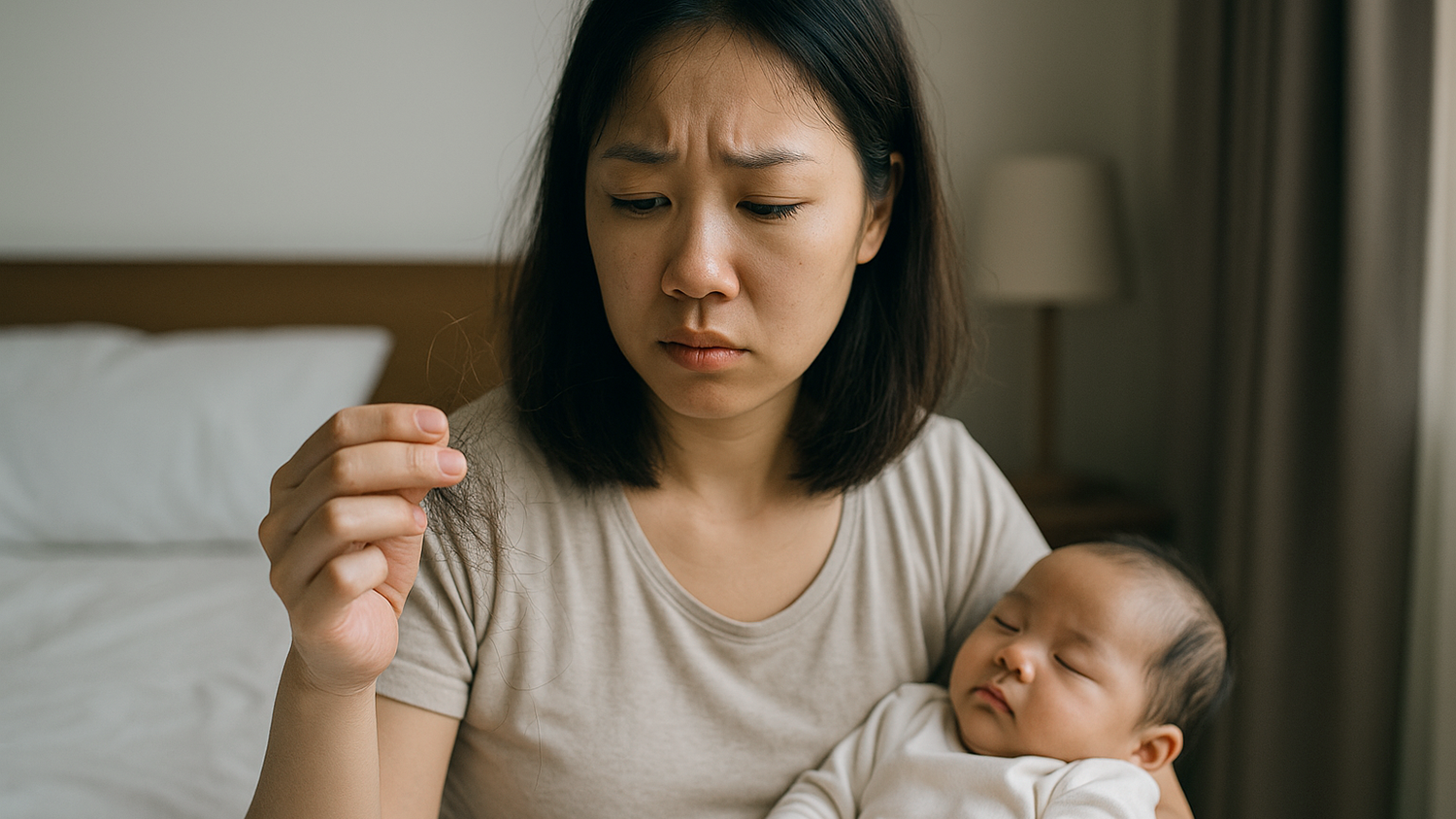Losing hair after childbirth? Discover why postpartum shedding happens, how long it lasts, and what treatments can help restore volume safely and effectively.

Losing hair after giving birth can feel scary, especially when no one warned you about it. For many new mothers in Singapore, the excitement of welcoming a baby is quickly followed by something unexpected: more hair on the pillow, in the shower, and stuck in the brush. It can feel like you’re shedding faster than your body can keep up, and for some, it becomes a real source of anxiety.
At Ido Hair & Aesthetics, we see this happen often. But the good news is that postpartum hair loss is usually temporary, and in most cases, it’s completely normal. Still, there are times when what looks like “just shedding” is actually something more serious. Understanding the difference is the first step toward getting your hair back and your peace of mind.
During pregnancy, your estrogen levels are naturally high. This hormone helps extend your hair’s growth phase, which is why so many women notice thicker, shinier hair while pregnant. But once you give birth, your estrogen levels drop sharply.
This sudden hormonal change causes a larger-than-usual number of hair follicles to shift into the resting (or shedding) phase of the cycle. That’s why around two to four months after delivery, many women begin to notice significant hair fall. This condition is called postpartum telogen effluvium —a temporary shedding that usually resolves on its own over time.
Even though it’s harmless, the amount of hair you see falling out can be shocking. It’s not unusual for women to lose up to 300 strands a day during this period. The important thing to know is that the hair follicles aren’t damaged —they’re simply “resetting” after pregnancy.
For most women, the worst of the shedding happens between three and six months after giving birth. From there, things typically start to improve. By the time your baby is about one year old, your hair should start to look and feel more normal again.
That said, this timeline varies from person to person. If you’re breastfeeding, managing stress, or dealing with nutrient loss from delivery, your hair might take a bit longer to bounce back.
In some cases, postpartum hair loss can **reveal or trigger longer-term conditions**—like female pattern hair loss or nutritional deficiencies—that don’t go away without treatment. That’s why it’s important not to ignore it if the shedding continues well beyond the first year.
While temporary shedding is common, there are signs to watch out for that could mean something else is going on. For example, if your hair keeps falling out in large amounts beyond 9–12 months postpartum, or if your scalp looks a lot more visible than before, it may be more than just hormone-related.
You should also pay attention to how your regrowth feels. If the baby hairs that grow back are very fine, weak, or patchy, it might be a sign of an underlying issue. Other warning signs include a widening part, thinner ponytail, or if your hairline isn’t recovering as expected.
It’s also worth considering whether you’re experiencing fatigue, mood swings, brittle nails, or irregular periods—signs that your body may be low in key nutrients like iron, zinc, or vitamin D. These deficiencies are common after childbirth and can slow down or prevent proper hair regrowth.
You can’t fully prevent hormone-related shedding; it’s a natural part of the recovery process. But you can minimise the severity and support healthier regrowth by taking care of your body during this time.
Focus on eating nutrient-dense foods, staying hydrated, and supplementing when necessary (especially with iron and vitamin D, if deficient). Try to get as much sleep and rest as possible, easier said than done, but important nonetheless. And manage your stress levels, since stress alone can trigger additional hair loss.
It’s also a good idea to treat your hair gently. Skip tight hairstyles, avoid frequent heat styling, and give chemical treatments a break. A calm scalp and a healthy follicle environment can make a huge difference in how quickly your hair rebounds.
Hair loss after childbirth is incredibly common, but that doesn’t mean you should ignore it—especially if it’s affecting your confidence or quality of life. Most women recover naturally, but some need extra support to return to full density, especially if other factors like stress, deficiency, or genetics are at play.
At Ido Hair & Aesthetics, we’re here to help you figure out what’s really going on—not just cover up the symptoms. With expert diagnosis, tailored treatment, and ongoing support, you can restore your hair safely and confidently. We’ll help you understand your scalp, your cycle, and what’s next. Book a consultation here.
Disclaimer: This article is for educational purposes and is not a substitute for professional medical advice.